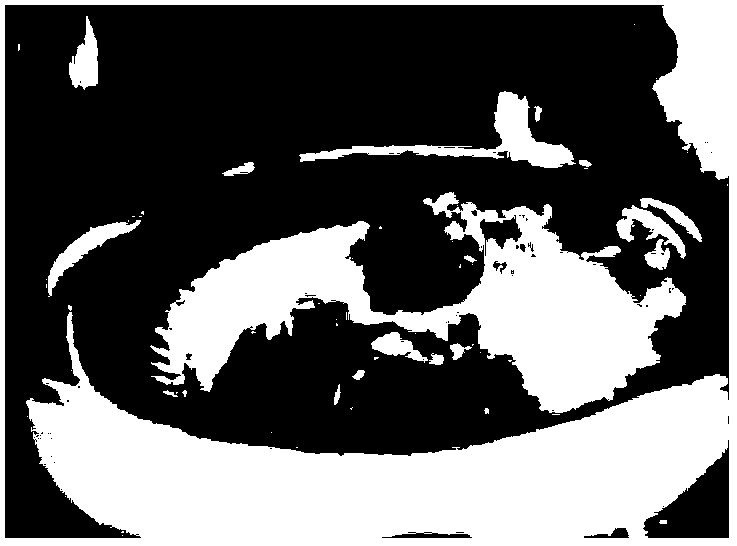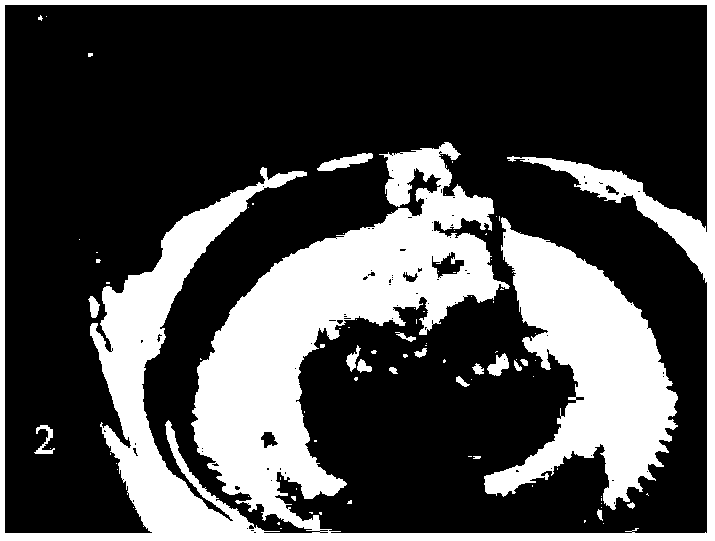Induction and regeneration method for callus tissue of Capparis masaikai
A callus induction and callus technology, applied in plant regeneration, horticultural methods, botanical equipment and methods, etc., can solve the problems of staying in, difficult to meet the limitations of artificial planting and in-depth laboratory research, development and utilization, etc. , to achieve the effect of low production cost, great application value and solving the problem of seedling breeding
- Summary
- Abstract
- Description
- Claims
- Application Information
AI Technical Summary
Problems solved by technology
Method used
Image
Examples
Embodiment 1
[0035] The method for inducing and regenerating the betel nut callus provided by the present embodiment comprises the following steps:
[0036] (1) Material selection and disinfection process: Select the immature fruit of betel nut that is free from diseases and insect pests and in good growth state, clean the fruit with clean water, carefully peel off the young immature embryo on the sterile workbench, and then place Disinfect in 75% alcohol by volume for 10 seconds, rinse with sterile water once, soak in 0.1% mercury chloride by mass for 3 minutes, wash with sterile water for 4 times, and shake it from time to time during soaking, so that The immature embryos of the explanted betel nut fully contacted with the disinfectant;
[0037] (2) Callus induction process: the immature embryos obtained in step (1) were cut into tissue pieces of about 2.0 cm and inoculated in callus induction medium, and cultured in dark at 26-28° C. for 45 days, Obtain the callus piece of the seed emb...
Embodiment 2
[0044] The method for inducing and regenerating the betel nut callus provided by the present embodiment comprises the following steps:
[0045] (1) Material selection and disinfection process: Select the immature fruit of betel nut that is free from diseases and insect pests and in good growth state, clean the fruit with clean water, carefully peel off the young immature embryo on the sterile workbench, and then place Disinfect in 75% alcohol by volume for 10 seconds, rinse with sterile water once, soak in 0.1% mercury chloride by mass for 3 minutes, wash with sterile water for 4 times, and shake it from time to time during soaking, so that The immature embryos of the explanted betel nut fully contacted with the disinfectant;
[0046] (2) Callus induction process: the immature embryos obtained in step (1) were cut into 1.5 cm tissue pieces and inoculated in callus induction medium, and cultured in the dark at 26-28°C for 35 days to obtain The seed embryo callus block of betel...
Embodiment 3
[0051] The method for inducing and regenerating the betel nut callus provided by the present embodiment comprises the following steps:
[0052] (1) Material selection and disinfection process: select naturally matured and dried seeds (that is, mature embryos), clean the seeds with clean water, carefully peel off the mature seed embryos on a sterile workbench, and then place them in a volume of 100 Disinfect in 70% alcohol for 60 seconds, rinse with sterile water once, soak in 0.1% mercury chloride for 20 minutes, wash with sterile water for 4 times, shake from time to time during soaking, so that the explants Full contact with disinfectant;
[0053] (2) Callus induction process: the mature embryos obtained in step (1) were cut into 1.5 cm tissue pieces and inoculated in callus induction medium, and cultured in dark at 26-28°C for 60 days to obtain The callus mass of betel nut seed embryos has a callus rate of 70%, and the induced callus is better, yellow, compact and shiny. T...
PUM
 Login to View More
Login to View More Abstract
Description
Claims
Application Information
 Login to View More
Login to View More - R&D
- Intellectual Property
- Life Sciences
- Materials
- Tech Scout
- Unparalleled Data Quality
- Higher Quality Content
- 60% Fewer Hallucinations
Browse by: Latest US Patents, China's latest patents, Technical Efficacy Thesaurus, Application Domain, Technology Topic, Popular Technical Reports.
© 2025 PatSnap. All rights reserved.Legal|Privacy policy|Modern Slavery Act Transparency Statement|Sitemap|About US| Contact US: help@patsnap.com



